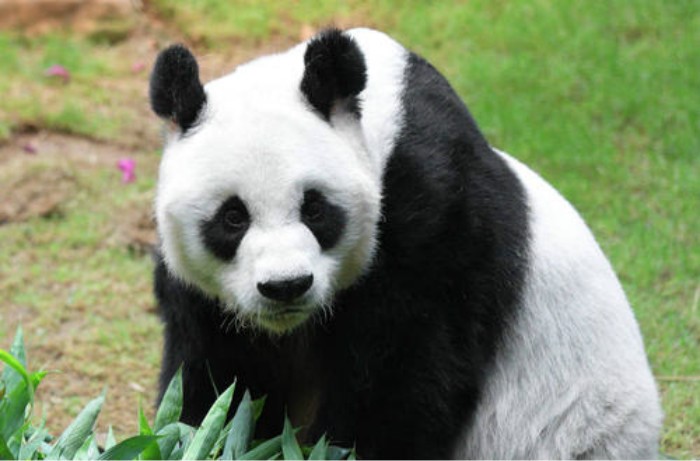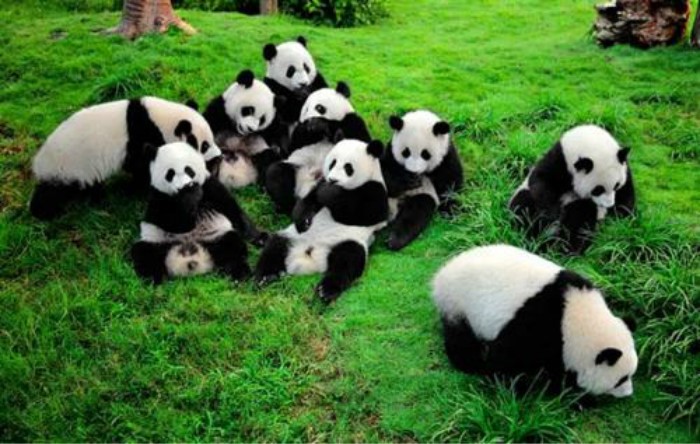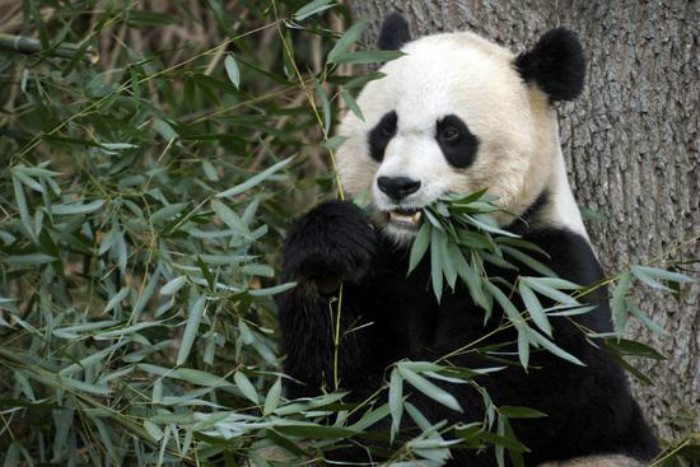Panda belongs to the family of bears. Pandas live in the bamboo forest of China, but loss of natural habitat and poaching pushed pandas to the brink of extinction. These beautiful animals are critically endangered with just 1000 pandas left in the wild.
Any animative movements of the giant panda will draw wide attention and generate happiness. They are cute and cuddly with cool eye patches and dopey gestures. There are many reasons why people love them and the most important one is that they are rare and endangered.

Endangered Panda
Giant pandas have become an endangered species in the world and many people wonder why. These creatures seem so benign, innocuous, and harmless that a great deal of curiosity arises as to how and why their numbers diminish. As is the case with scores upon scores of endangered and extinct animals, certain unexpected changes contributed to a decline in population.

Pandas, as is the case with other animals, must live in a very specific environment in order to survive. These creatures, which are cousins to the raccoon and not bears as commonly thought, must live in a forested area. The forest offers them the right climate and food source in which to survive. The intrusion of humans into their environment has had a devastating effect. Namely, humans have cut down the forests in which these creatures live. Specifically, the bamboo plants the panda relies upon for food are cut down.
During the early years of human intrusion, pandas could move to another section of the forest where a food supply exists. Over time, as more and more forests are cut down, there is far less food for the remaining population of pandas. The result here is that the pandas end up starving to death.
Many pandas were also slaughtered over the years by hunters who once killed them just for sport. However, such a practice is no longer commonplace today.
Habitat

Throughout history, most regions of China were home to giant pandas, including Zhoukoudian in Beijing, the site of the prehistoric Peking Man; Guangxi, Guangdong and Yunnan provinces; and nearby regions in Southeast Asia, including Myanmar, Thailand, Laos and Vietnam.
In China, most giant pandas live in the mountains of Qinling, Minshan, Qionglai, Daxiangling and Xiaoxiangling. Their habitation area covers about 2.3 million hectares. Among them, 80 percent live in Sichuan province. The rest reside in Shaanxi and Gansu province.
Generally speaking, wild pandas live on mountains at an altitude above 2,500 meters.
The Chengdu Research Base of Giant Panda Breeding is located in Chengdu, provincial capital of Sichuan. It is the world’s most famous agency for giant panda migration research and protection. It is also the world’s best place to watch giant pandas.
Food

More than 20 kinds of alpine bamboo (especially young fleshy stems and buds, bamboo shoots). An adult panda eats about 40kg (88 pounds) fresh bamboo shoot a day, 14kg (about 31 pounds) bamboo stalks, or 20kg (about 44 pounds) bamboo leaves. It has a greater appetite in summer than winter. In the wild, they may eat other plants and occasionally dead or small animals. Their ancestors were true carnivores. About one million years ago, they began to eat bamboo.
Breeders usually provide giant pandas with corn bread and fruit for nutrition supplementation. Pandas favor kiwifruit, aquatic plants, weeds, shrubs and trees.
Growing Process

A giant panda’s pregnancy lasts from 83 to 200 days. The body of a newborn giant panda is pink and spans 10 centimeters, which makes its tail seem particularly long. An average newborn giant panda weighs between 51 grams and 225 grams, less than one-thousandth of its mother’s weight.
Four to five days after its birth, a giant panda’s ears and eye sockets begin to gradually grow darker. After 30 to 38 days, it begins to have the characteristic appearance of other giant pandas. A mother panda has four nipples for babies to drink nutrient-rich milk. Panda breast milk also contains various substances that help newborns resist disease.
Baby pandas begin to walk at around 90 to 120 days old. Wild juvenile giant pandas leave their mother and live independently when they are 1.5 to 2 years old.
A wild juvenile giant panda usually leaves its mother and lives independently at 1.5 to 2 years old. A human-fed giant panda is weaned about five months to 1.5 years after birth, or sometimes at the age of two. A female giant panda sexually matures when it is about 5 years old, a male matures at around 7 years old.
Leave a Reply